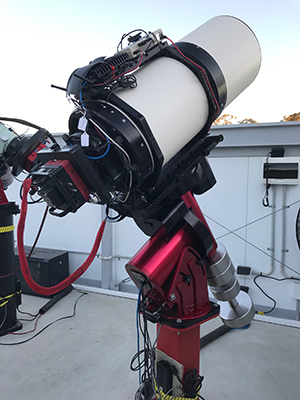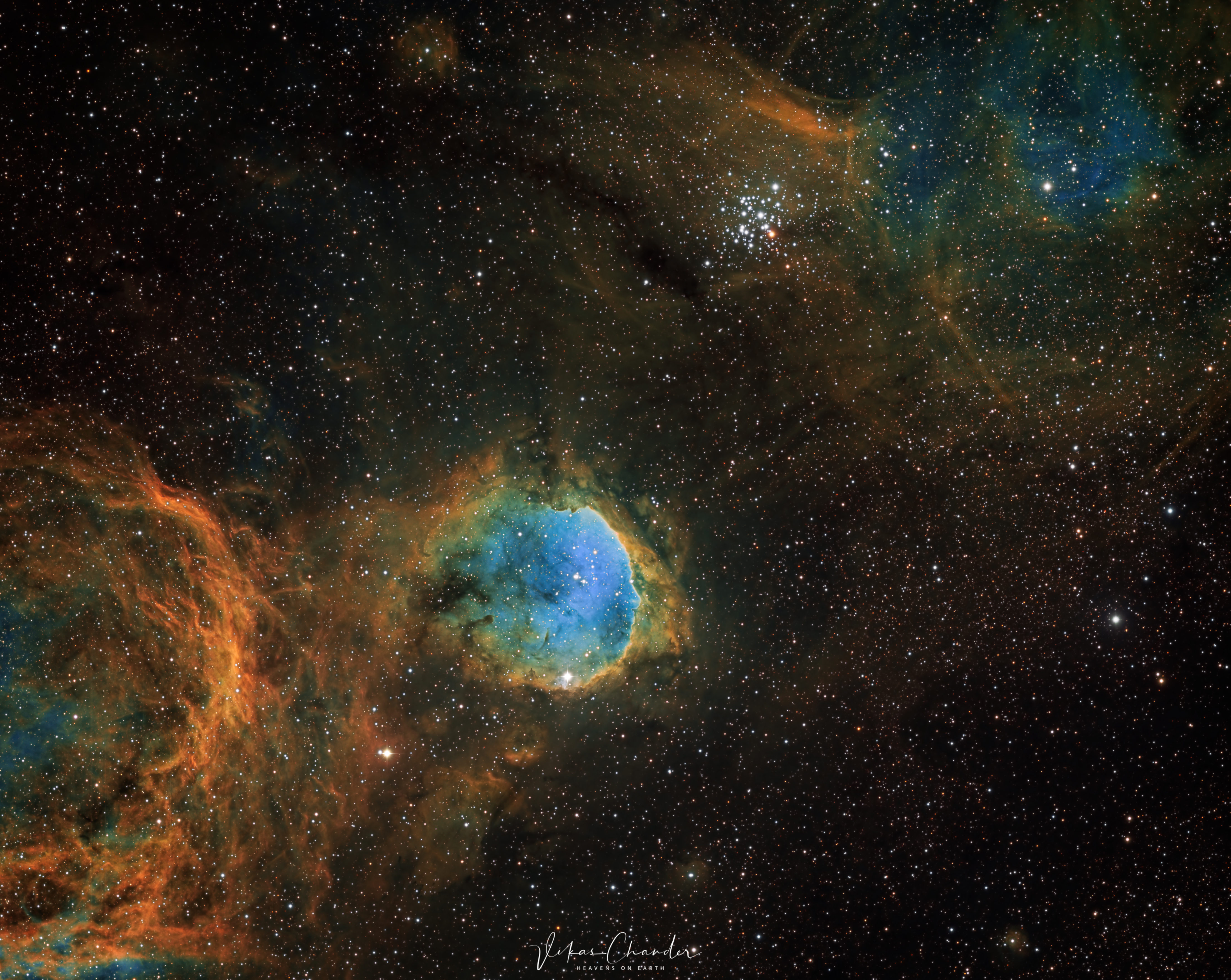Telescope : Astro Physics 12″ Riccardi-Honders f3.8
Camera : ZWO ASI6200
Mount: Software Bisque Paramount ME II
Pixel scale : 1.07 arcsec/pixel
FOV : 88 x 66 arcmins
Filters SHO & RGB for stars
Integration: 15h30m
Sii 14x20m Ha 14x20m Oiii 14x20m
R 3x10m G 3x10m B 3x10m
RA center: 10h 37′ 2″
DEC center: -58° 31′ 38″
Location : Heaven’s Mirror Observatory
Software: PixInsight & Photoshop

NGC 3293 is an open cluster in the Carina constellation. It was discovered by Nicolas-Louis de Lacaille in 1751. It consists of more than 100 stars brighter than 14th magnitude in a 10 arc minute field, the brightest of which are blue super giants of apparent magnitude 6.5 and 6.7. There is also a 7th magnitude pulsating red super giant, V361 Carinae. NGC 3324, The Gabriela Mistral Nebula is named after a Nobel Prize winning Chilean poet as her profile eerily matches the face profile seen in the nebula. Spanning about 35 light years, this bright cosmic cloud was sculpted by stellar winds and radiation from the hot young stars of open cluster NGC 3324. It lies some 7,000 light-years away towards the Eta Carina constellation and with dust clouds in silhouette against its glowing atomic gas, the bright emissions create an image of a human face in profile. This narrow band filter image captures the emission lines from sulfur, hydrogen, and oxygen atoms mapped to red, green, and blue color in what is also known as the Hubble Palette. Stars were shot in red, green and blue and were later replaced in post processing.
